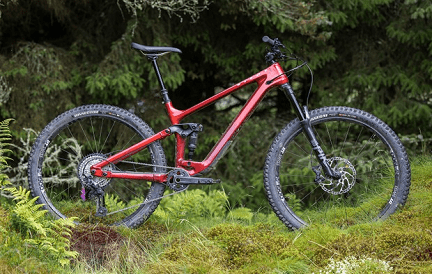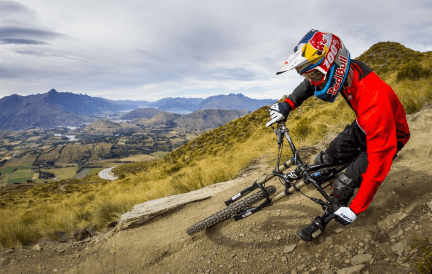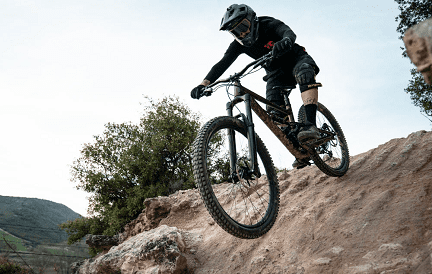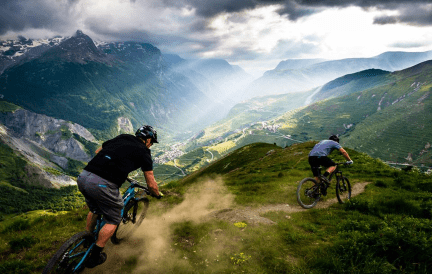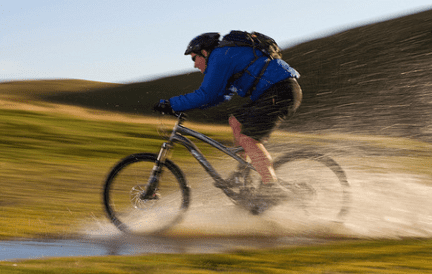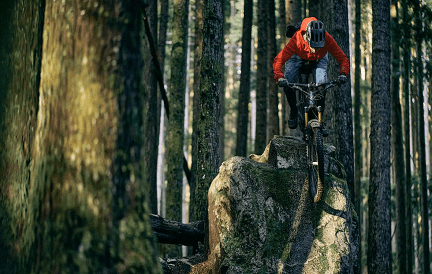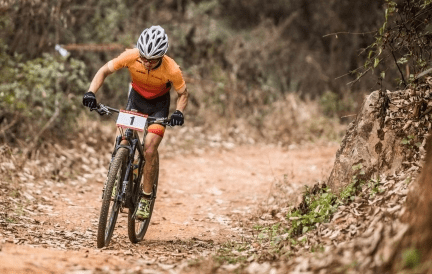Down hill mountain biking is one of the most striking sports. Riders hitting huge jumps and crazy rock gardens, full-face helmets, long-sleeve clothes. The cool image of downhill biking is what attracts many people to this sport.
- Part 1: What Is Down Hill Mountain Biking
- Part 2: What Equipment Do You Need To Start Downhill Biking
- Part 3: Downhill Mountain Biking Trails
- Part 4: Riding Downhill Guide
Part 1: What Is Down Hill Mountain Biking
From huge jumps and crazy rock gardens to full-face helmets and long-sleeve clothes, downhill mountain biking is one of the most adrenaline-filled sports. This popular sport is both a kind of riding as well as an elite racing discipline. The scene varies from professionally built paths at lift-served bike parks to local trails that are accessed from a shuttle road. The kind of riding as the name suggests, as downhill riding.
A best downhill mountain bike is not designed to be pedaled uphill. Therefore, downhill riders usually get to the top of the hill with a chair lift at a ski resort or from a shuttle vehicle. Downhill mountain biking trails and tracks are to be as challenging as possible.
They will be high speed and present both natural and artificial features. Natural specifications can include rock gardens, root beds, and off-camber parts. Trail makers will add compulsory jumps and drops to preserve technicality high and the adrenaline flowing.
Part 2: What Equipment Do You Need To Start Downhill Biking
The best downhill bikes are the most aggressive ones available, designed to tackle the roughest terrain at high speeds. Because of this, they have large amounts of suspension travel, most of the time around 200mm both in the front and rear. The rear shock is often a coil shock, and the fork is usually a double-crown fork, like the Fox 40 or RockShox BoXXer.
Geometry on downhill bikes will be low and slack. Since different wheel sizes entered the MBT market, downhill mountain bikes still commonly used 26-inch wheels. However, as mountain bike design got more refined, racers started to realize the benefits of larger tires. Today, downhill mountain bikes are available in both 29er and 27.5-inch wheel sizes. Some racers also looking for a mullet wheel size setup (29 front, 27.5 rear).
We design different parts of downhill MBTs as sturdy as possible. The brakes will be strong and present large rotors. Wheels use heavy thick casings to get the most preservation from sharp rocks possible and use aggressive tread patterns. Moreover, tire producers create ultra-specific mud wheels for downhill racing in super wet conditions. Shimano and SRAM both make downhill-specific groupsets, that have a limited gearing range and use short caged derailleurs to keep away from damage.
Professional downhill riders always use the best full-face MBT helmets for the most protection possible. Safety pieces of equipment such as knee pads, elbow pads, back protectors. Even neck braces are also common pieces. Downhill riders will usually wear long-sleeve jerseys and pants for better handling and protection. While downhill kits started baggy, a lot of riders are discovering the aerodynamic advantages of more tightly fitting attires. Even though super-tight skinsuits are banned from UCI race courses.
Part 3: Downhill Mountain Biking Trails
Down hill trails are constructed to be extremely steep, challenging, and fast. You can expect many gaps, jumps, drops, technical corners, and of course rocks and roots. One of the primary places to find downhill trails is at ski resorts since they already have the pieces of equipment for riders to take the chair lift to the top of the hill. These bike parks have tracks rated for all skill levels, therefore, nearly anybody can go and improve their riding skills.
The most popular and famous bike park is placed in Whistler, British Columbia, Canada. Trail makers in Whistler are assumed the first to create the ski-resort bike park concept that has now spread across the entire world.

A huge number of these bike parks, especially the ones located in Europe, are hosts to the Downhill World Cup race series. Les Get’s, Leogang, Val de Sole, Fort William, and Mont Saint Anne most notably host elite races regularly and have been the stage for the best racers to compete against each other.
You can find down hill biking trails outside of designated parks as well. However, these trails can be even more challenging to access. If there is a good road nearby, riders can use a vehicle to shuttle up to the top of the hill. On the other hand, riders can also hike up the hill as downhill mountain bikes are not designed to be pedaled uphill. Down hill trails are usually very challenging, so it’s always better to take an easy lap down the path to look at all the specifications before heading down at full speed.
Part 4: Riding Downhill Guide
The easiest way to ride downhill is by going to a lift-served bike park. These bike parks always have mountain bikes and equipment for rent and cater to all skill levels. Not many people live nearby a bike park though, which makes downhill mountain biking a tricky discipline to get into. The other choice is using a shuttle vehicle or hiking to the top yourself. Many places have trails that are suitable for downhill mountain biking, but the main challenge is getting to the top.
Downhill mountain bikes, as the name suggests, aren’t great options for climbing hills. This is one of the reasons why enduro mountain biking has become so popular these days. Enduro bikes combine great downhill suspension performance alongside a platform that is much easier to pedal up hills. Enduro bikes are very powerful descenders, so they can be great alternatives to regular downhill mountain bikes. You don’t necessarily need a down hill mountain bike to ride downhill trails. These bikes can go as fast as possible downhill on the roughest trails around. In addition, speed on the descents is for their geometry. Also for pedaling back uphill to start the next ride.
With popular enduro bikes getting more and more capable, many riders are choosing the more versatile option. However, there are still downhill lovers who can’t give up the feeling of pure speed in down hill bikes. In terms of descending capability, even the long-travel enduro bike will find it difficult to compete with a down hill bike on a DH-specific path. The uncompromised geometry, suspension systems, and parts make downhill bikes extremely durable and controlled on the toughest terrain.

